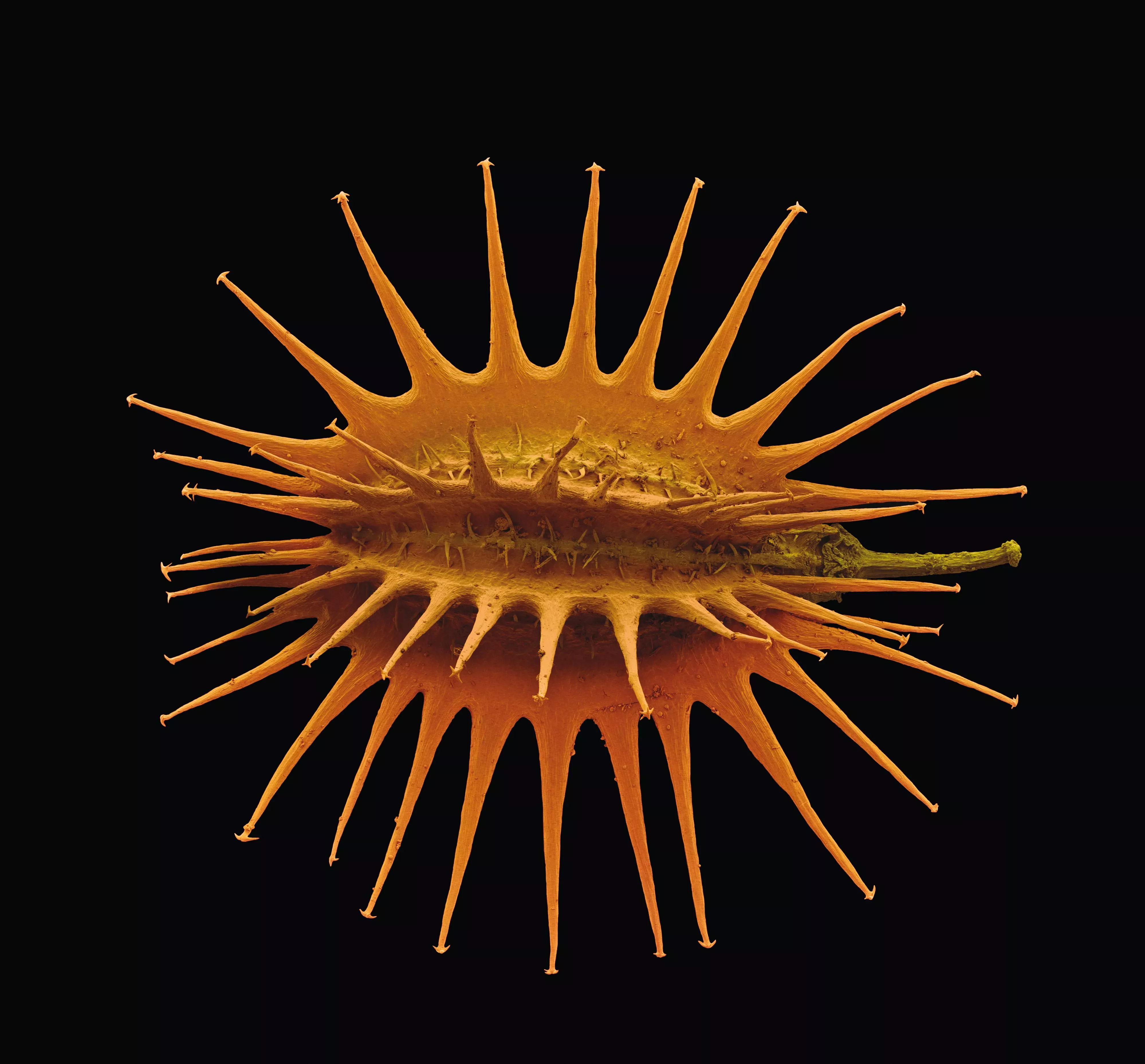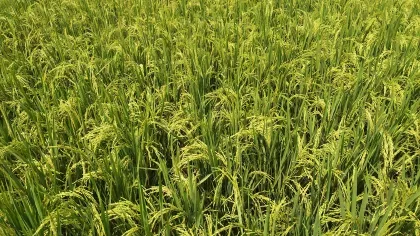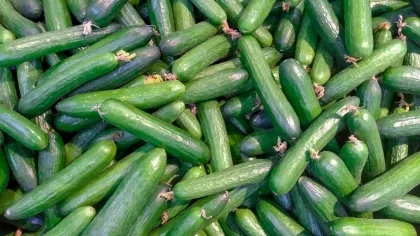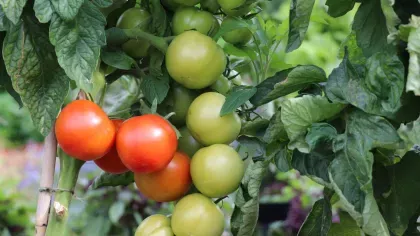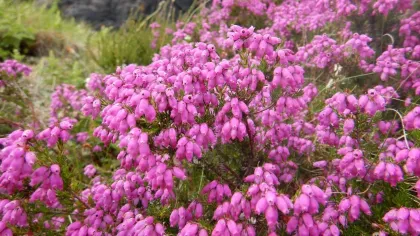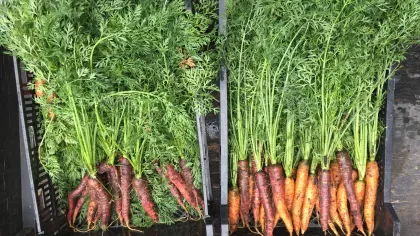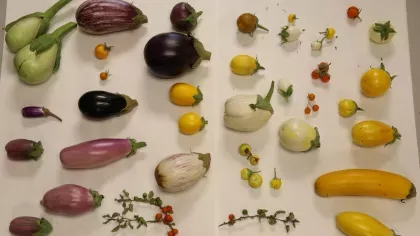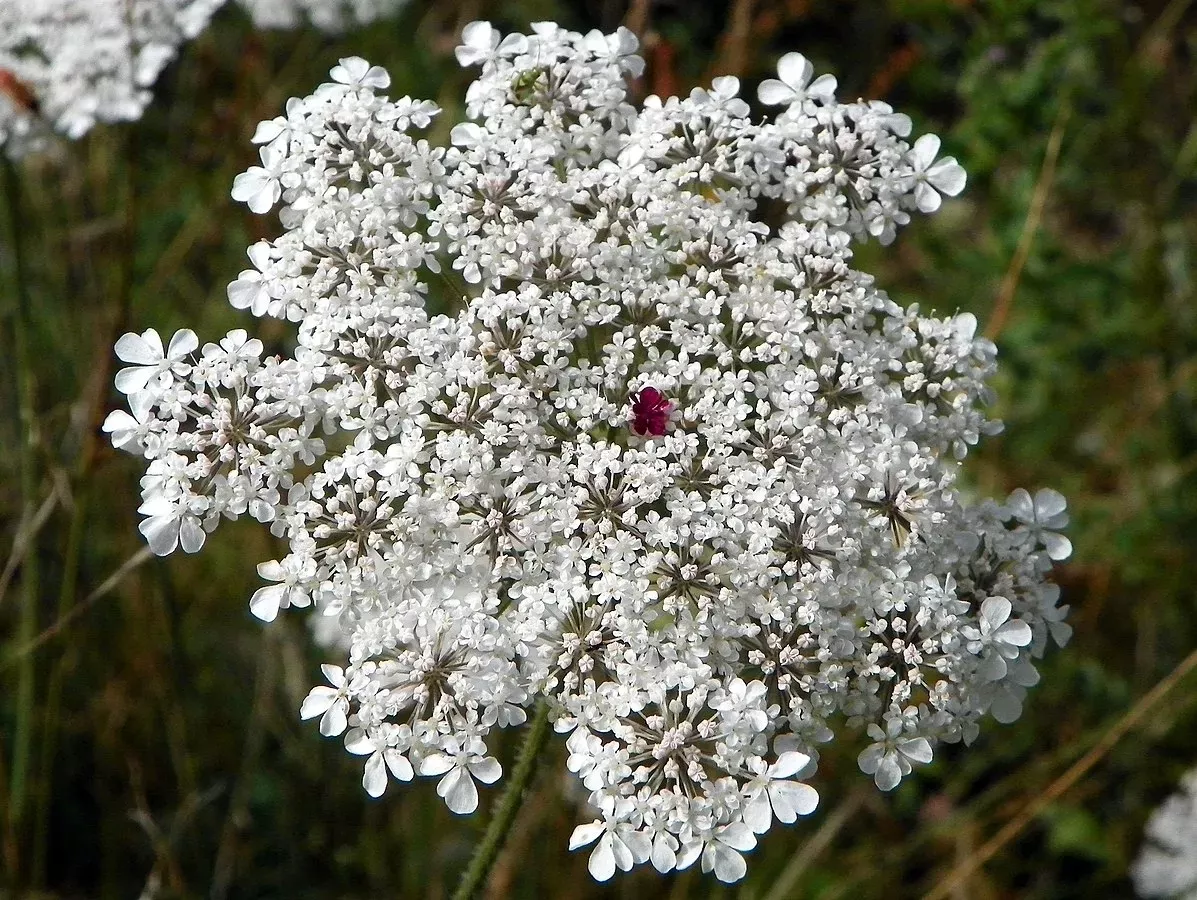
Wild carrot
On this page
While it might be a far cry from its more famous cousin, the wild carrot is a common sight all across the UK.
Unlike the domesticated carrot, the wild carrot has a small, tough root that does not make for good eating.
As a wildflower, it plays a crucial role in supporting pollinators and increasing biodiversity.
One of the common names of the wild carrot, Queen Anne’s Lace, is in honour of Anne, Queen of Great Britain (1665 — 1714)
Plant description
Wild carrots grow up to 150 cm tall and have a hairless or bristly stem. The leaves are feathery in appearance and give off a carrot odour. Unlike commercial cultivated varieties (cultivars) of carrot, wild carrots have small, pale taproots. The white flowers grow in umbrella-like clusters up to 7cm in diameter and may have one purple or red flower in the centre. These clusters fold inwards, becoming concave, when the flowers turn to seed. Wild carrot fruits are covered in spiny ridges that attach to passing animals to help with seed dispersal.
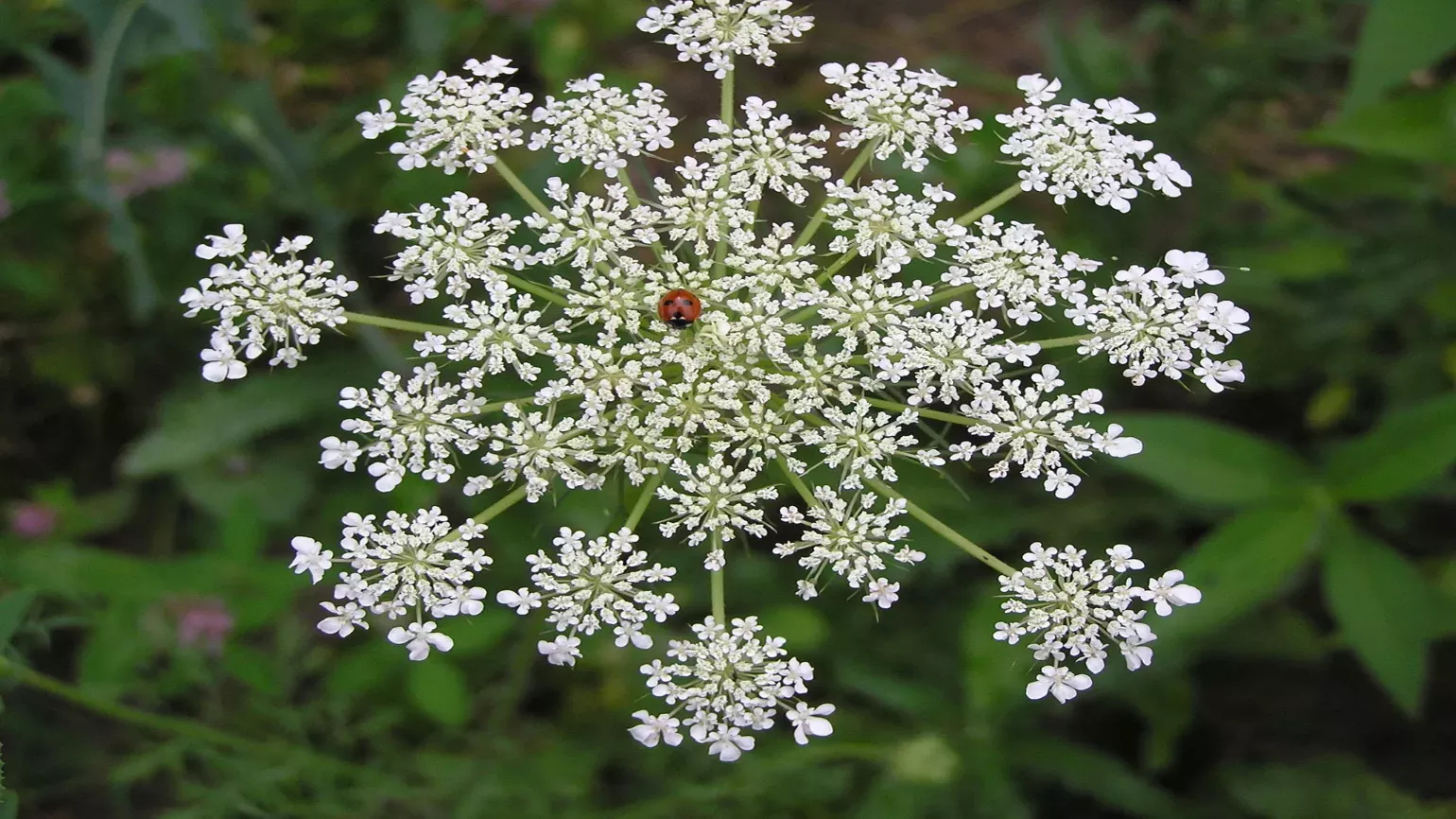
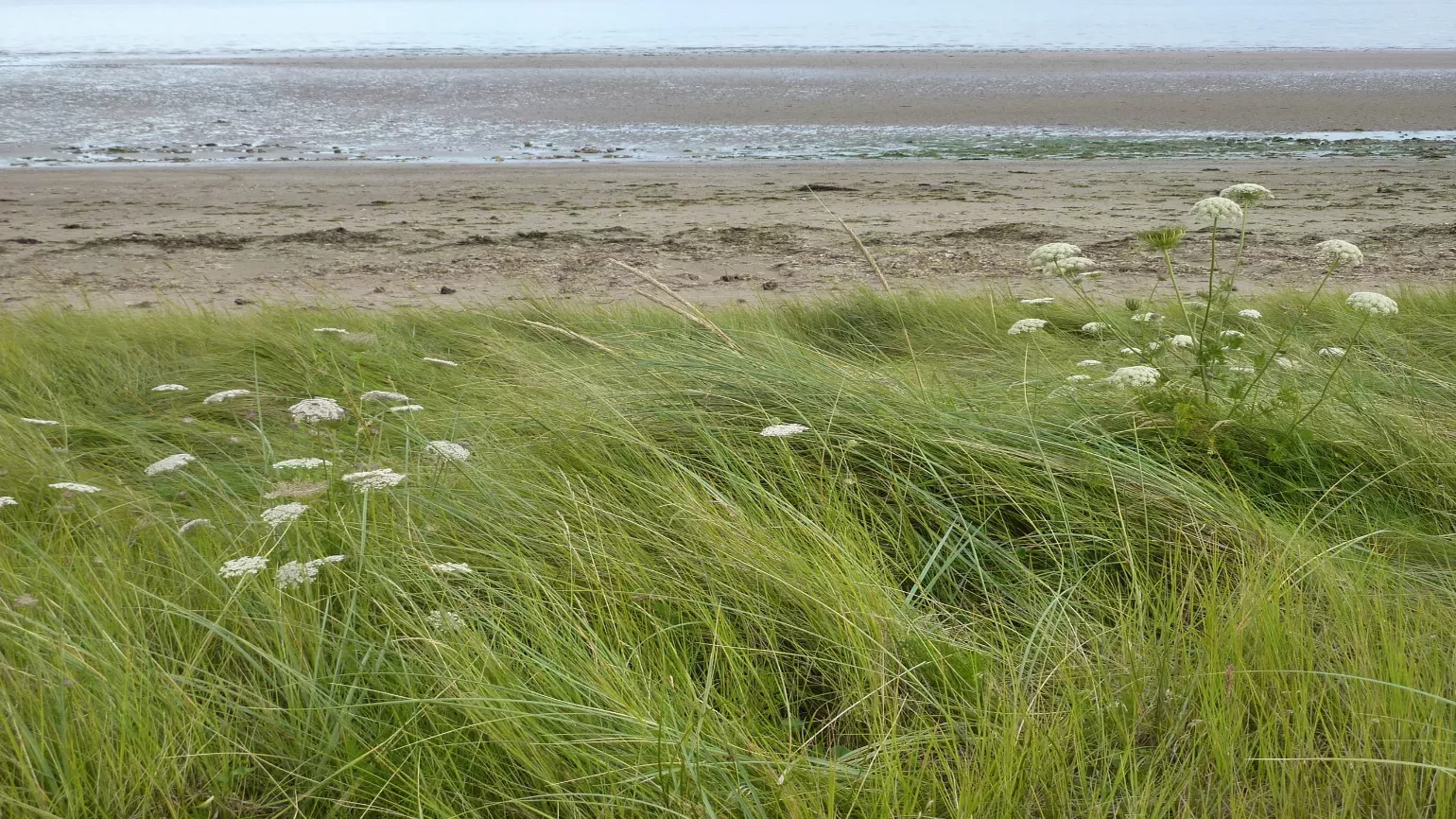
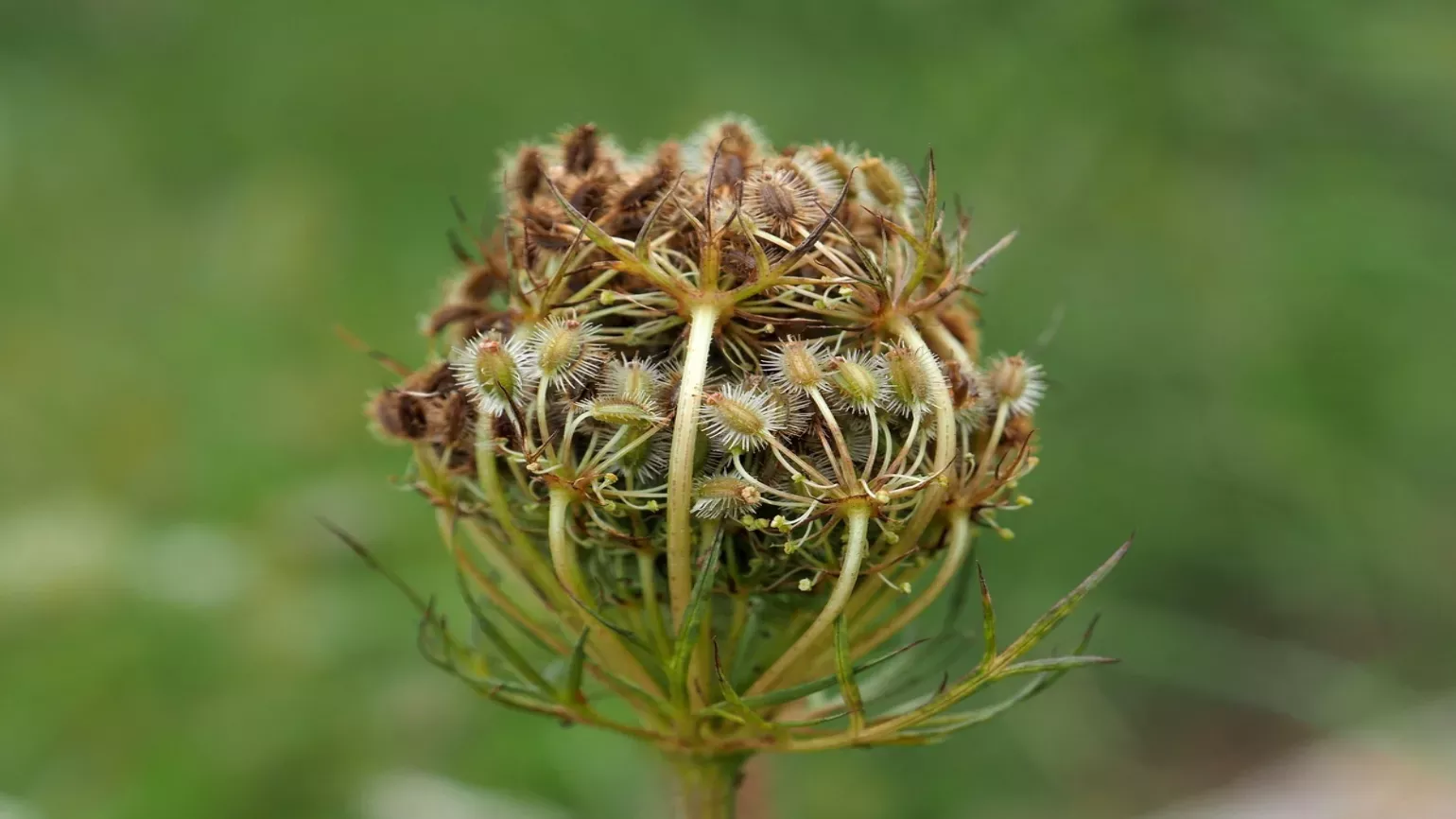
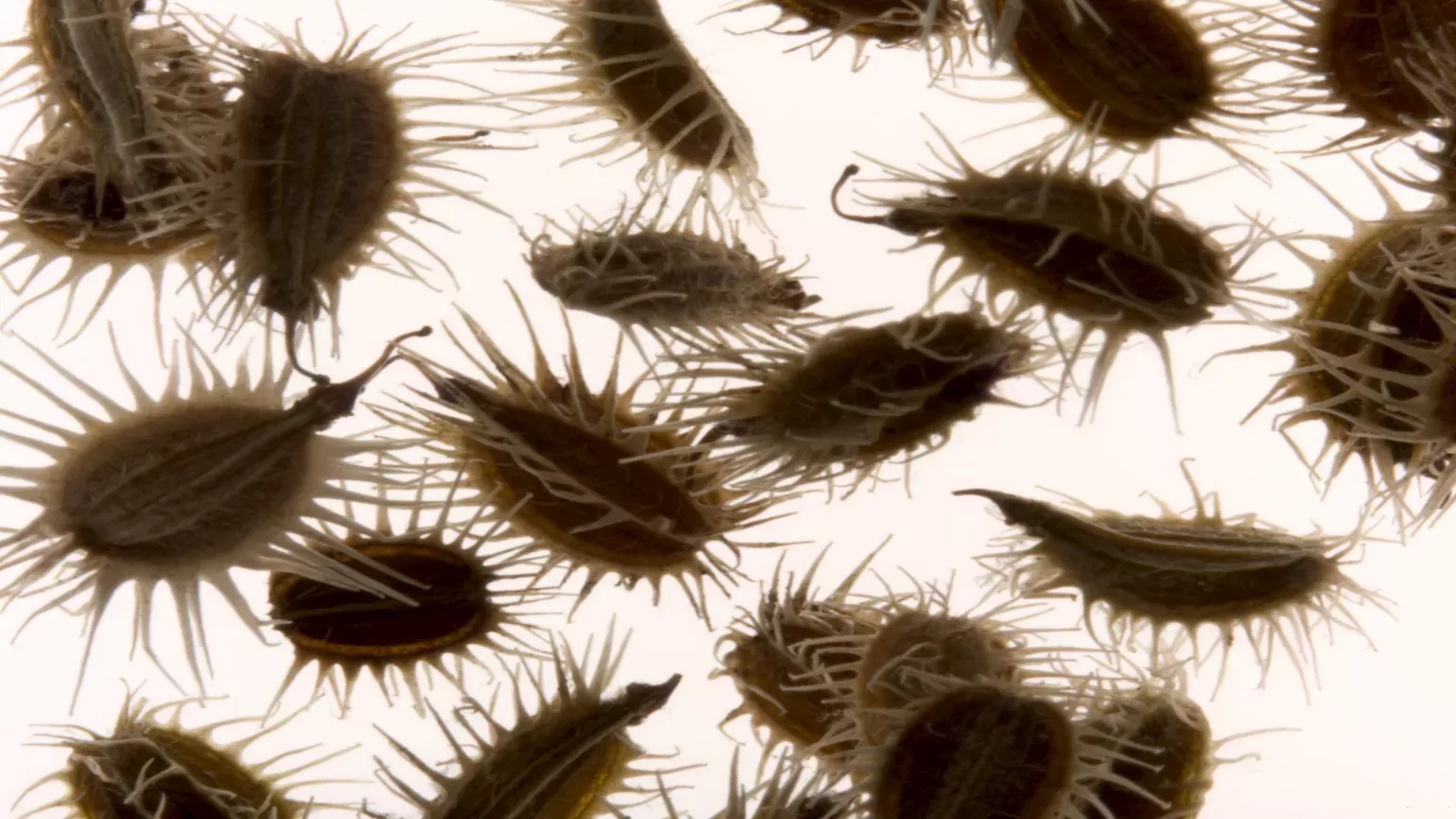
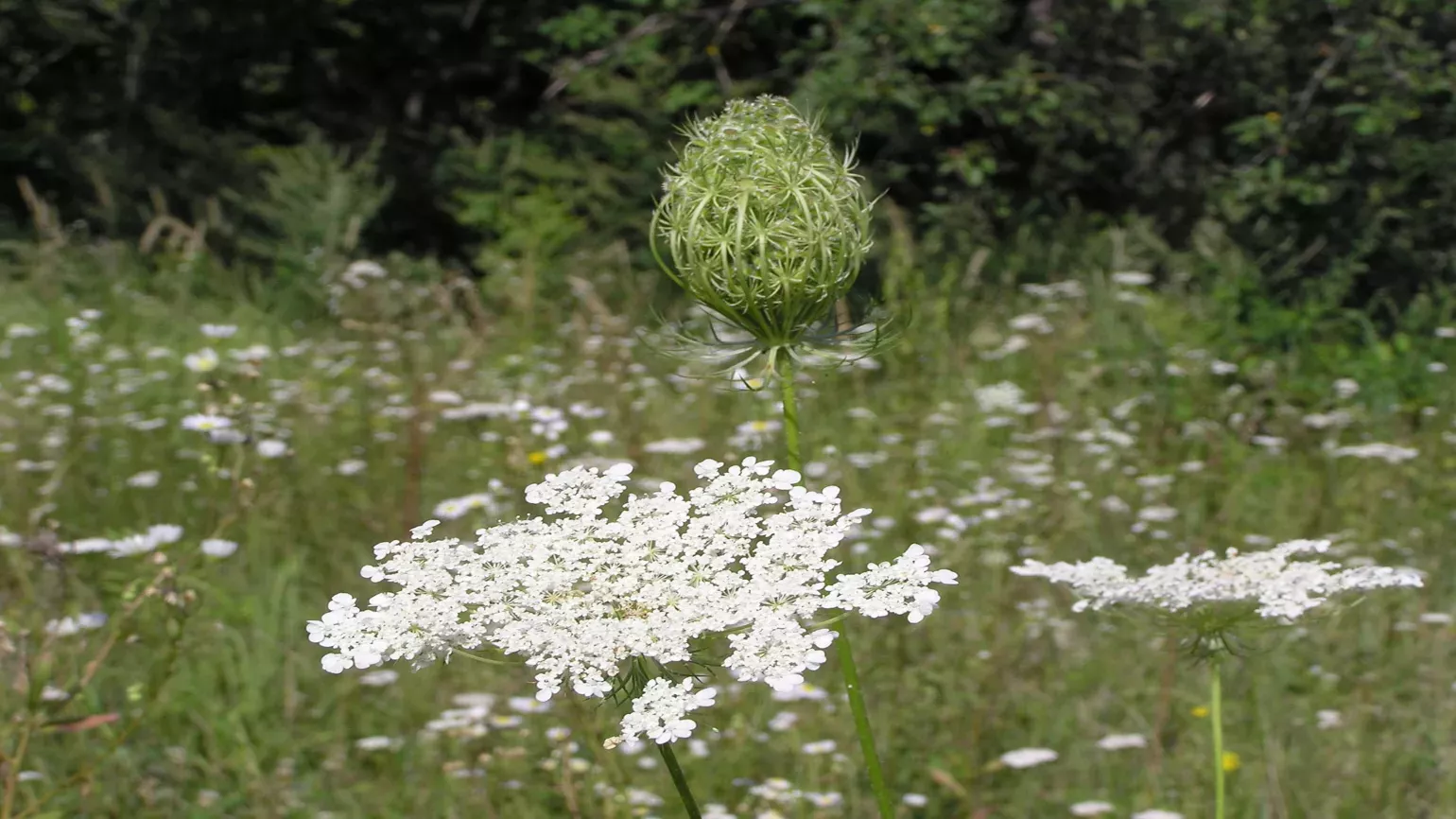
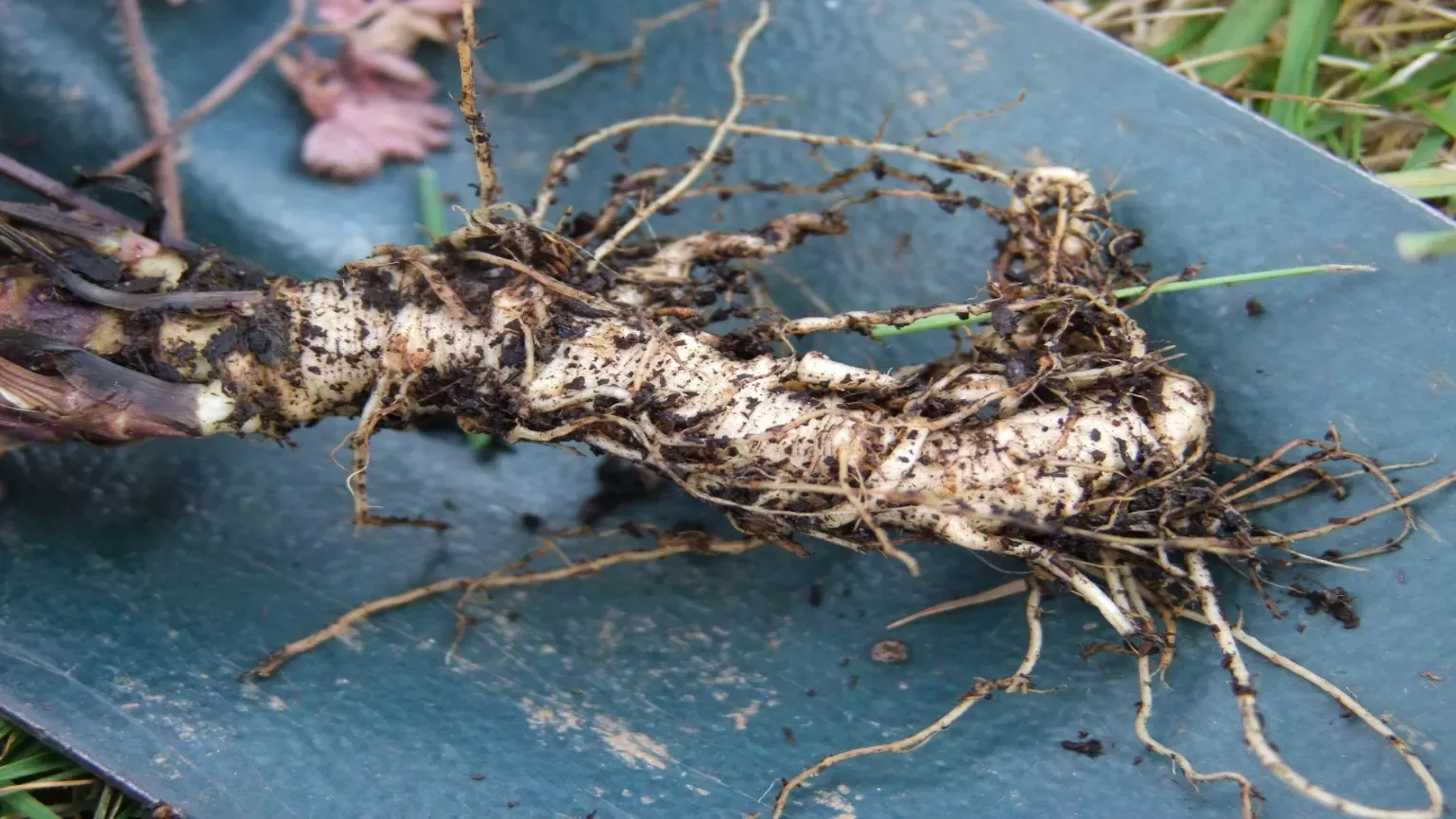
Plant uses
Cultural
Wild carrot flower heads occasionally appear in flower arrangements.
Food and drink
The wild carrot cultivar Daucus carota subsp. sativus is a major root vegetable for human and livestock consumption, with over 40 million tonnes farmed each year.
Wild carrot root is edible, but is smaller and more woody than commercial cultivars. They are eaten when young, or are roasted, dried, and ground to a powder to be used for making coffee. The seeds are used as a flavouring in stews, and the flower heads are lightly battered and deep-fried.
Wild carrot is also occasionally used as a companion plant for crops to help attract more pollinators.
Health
The seeds of wild carrots have been used as a herbal contraceptive.
Did you know?
The central flower of the wild carrot cluster can often be red or purple. It is not clear why this is, but some think it may help attract pollinators to the flowers.
Contact with the leaves of the wild carrot can cause light skin irritation in some people.
Wild carrot is a member of the Apiaceae family which also contains herbs like coriander, cumin, and parsley, as well as other root vegetables like parsnips.
Wild carrot appears in a list of aromatic herbs grown in the royal garden of Babylon in the 8th century BC. It is thought to have been grown for its fragrant leaves or seeds.
Where in the world?
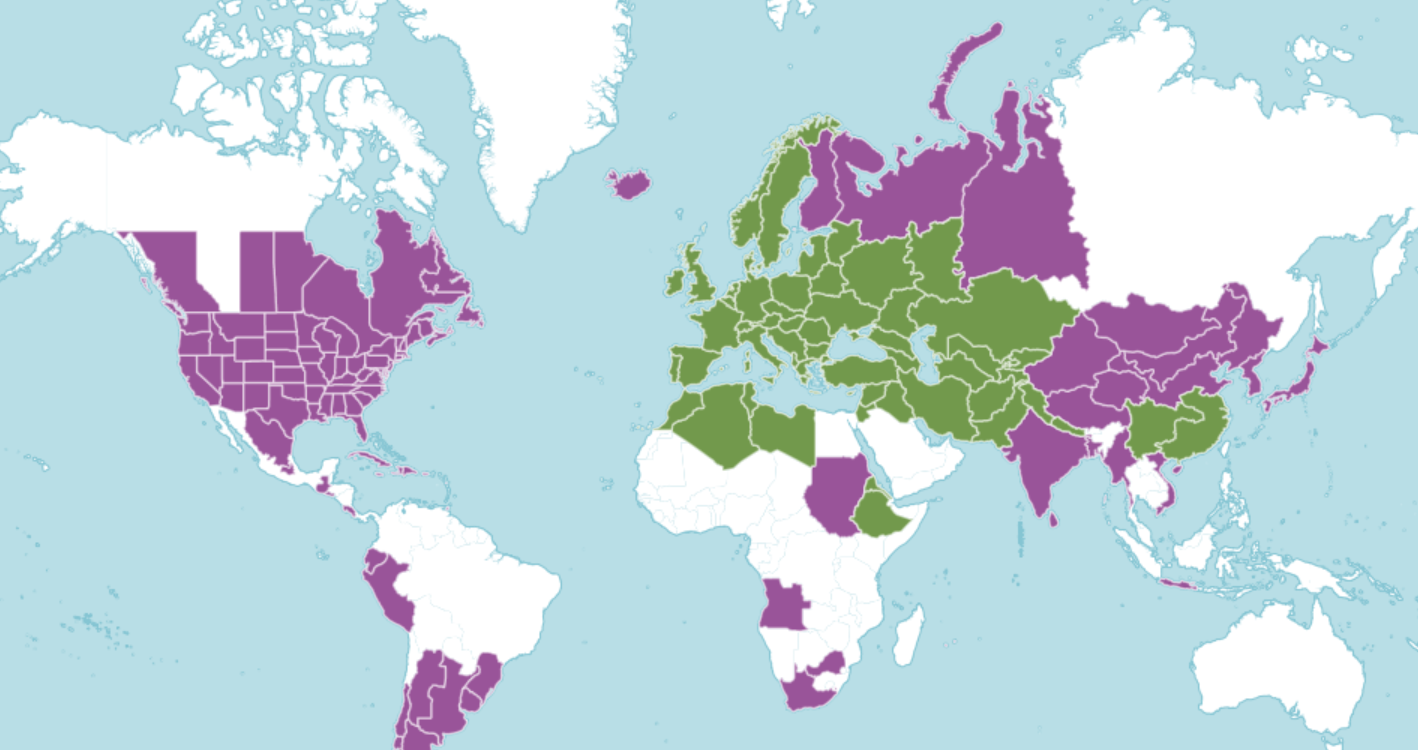
Rough grassland, roadsides, coastal cliffs and dunes.
Find it in our gardens
Kew Gardens
A botanic garden in southwest London with the world’s most diverse living plant collection.
Location
View map of Kew GardensBest time to see
Our work
Extreme weather can decimate carrot crops and they do not grow well when the summers are hot and dry.
Carrot crops are struggling in the UK — we can see it in our Kitchen Garden crop at Kew.
Warm temperatures are causing the carrots to bolt, which means they transform rapidly from being mostly leaf-based to being mostly flowers and seed. This usually results in the plants becoming inedible.
To secure the future of our food in a world with a growing population and changing climate, we need to protect our commonly eaten plants like carrots by looking to their wild relatives like wild carrots.
Cultivated carrots are bred to ensure certain traits such as size or colour remain consistent, but unfortunately they are not very resilient to weather or temperature changes.
Wild relatives of common plants are much hardier because they have adapted and thrived in a constantly changing climate.
Kew scientists have been working alongside the Global Crop Diversity Trust on a global project which has involved collecting seeds from wild carrots, and storing them in our Millennium Seed Bank to conserve them for future generations.
We collected more wild carrot seeds than any other genus in the Crop Wild Relatives project — over 2.1 million seeds.
